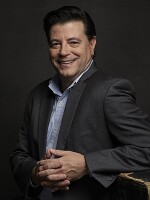The arts haven't had a whole lot of exposure on the campaign trail, but during a televised forum on WTNH on Sunday, the two Connecticut gubernatorial candidates traded barbs over Turkish concubines and the old masters.
A viewer asked a question about boats belonging to the candidates. Tom Foley's yacht is named Odalisque and he said its name comes from the works of painters like Henri Matisse. "Odalisque really means a beautiful woman, or a beautiful thing in the art world. It doesn't mean sex slave," said Foley.
The Merriam-Webster dictionary begs to differ. It lists the definition of odalisque as a female slave or a concubine in a harem. That definition was repeated by Governor Dannel Malloy several times.
Malloy used to own a boat, but Foley accused the governor of failing to pay bills on it before he sold it prior to running for governor.
That little skirmish aside, voters know little about each candidates' plan for the future of Connecticut's arts and culture industry.

"You have history; you have local art, various types of cultural venues, museums and the like, in every single town, almost," said Deputy Commissioner of the Department of Economic and Community Development Kip Bergstrom. "It's one of our largest industries, and it's one of the fastest-growing ones, and that includes arts and culture. Tourism generates about $11.5 billion in spending, and a little over $1 billion in state and local taxes."
Those statistics are from 2006, before the economic downturn. Still, it's clear that arts, culture, and tourism work hand-in-hand as an economic driver in Connecticut.
So how do the candidates weigh in on the arts? Do they value the arts, and see any funding of arts and culture projects as an investment?
Republican gubernatorial candidate Tom Foley said he is an avid supporter of the arts. "I'm not an artist myself," he said. "I don't think you'd want to hear me play the piano. You certainly wouldn't want to see me act or paint, but I'm a consumer."
Foley has a pretty solid arts background. He served on the board of the Kennedy Center for Performing Arts in Washington, D.C. As U.S. Ambassador to Ireland, he spearheaded cultural exchanges between American and Irish artists.
Foley said investment in the arts is a key part of his plan to revitalize Connecticut's urban areas. "One of the things that attracts people to cities are arts and culture," he said. "and so museums and theater are things that are of economic benefit to cities, and something I want to support."
Malloy, for the most part, agrees. In 2009, while on the campaign trail, Malloy said, "Connecticut tourism helps grow jobs, increases state revenue, and preserves the art and culture that makes Connecticut such a great place to work, live and raise a family."
But Malloy raised eyebrows in 2011, when as a cost cutting measure, he consolidated the state Commission on Culture and Tourism into the Department of Economic and Community Development. In 2012, Malloy made good on a campaign promise with a major investment in tourism, the $15 million "Still Revolutionary" campaign.
"This is a theme we can run for a couple of years, and that was what we were looking for, to tell various stories over a period of time that helps redefine Connecticut in our own minds, and in visitor's minds," said Malloy in 2012.
"Still Revolutionary" was a far cry from Governor Jodi Rell's one dollar tourism marketing budget. According to the DECD's Kip Bergstrom, it's been a huge success. "Well, it's generated 12 times the state's investment in tourism marketing, so a 12-to-one return, that's pretty good," he said.
Foley said that while he's all for a robust investment in tourism, he wonders exactly who is benefiting from the "Still Revolutionary" campaign. "I'm not sure how those ads that they're running are promoting tourism," he said. "They seem to be suggesting that everything is fine in Connecticut, and yet they're running the ads here in Connecticut. I'm not sure how that benefits either tourism or the state of Connecticut."
In these final days and hours before the polls open, the candidates will hammer away at the issues that divide them -- things like the economy and jobs. But on the issue of arts and culture, although they've been short on specifics, the candidates fundamentally agree.
That could be good news for the over 147,000 people who rely on the state's arts, culture, and tourism industry for their livelihood.





